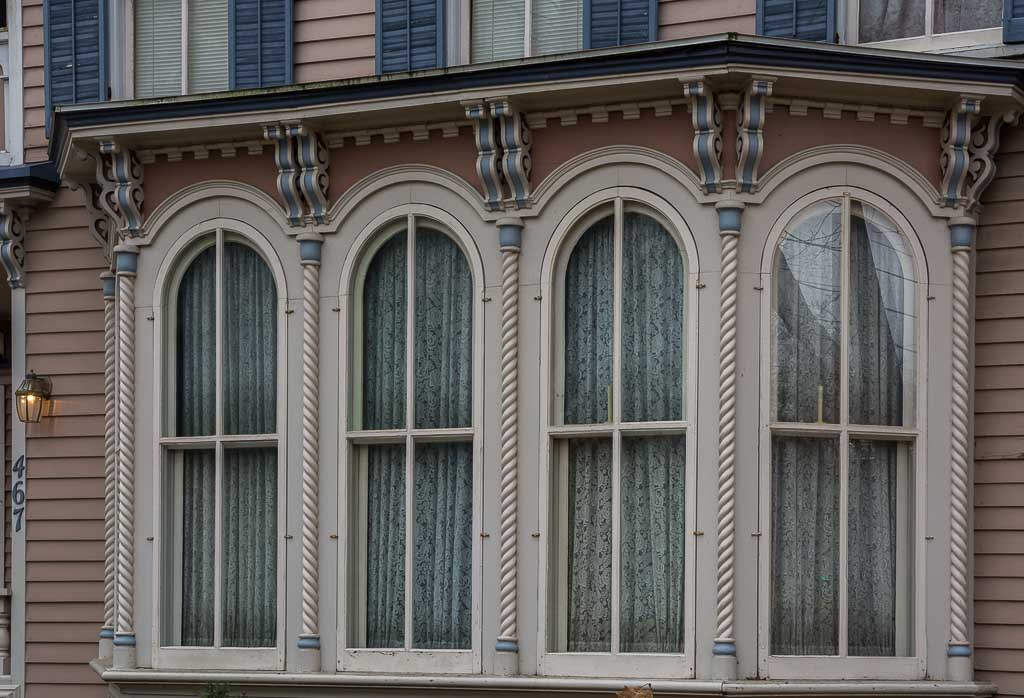467 E. CHICAGO STREET
HISTORIC SIGNIFICANCE
467 E. Chicago Street was built in 1876 for John and Mary Webb. John, an immigrant from England, was the supervisor of the Dial Department at the Elgin Watch Factory. He platted the lots for Rugby and Warwick and gave the street's names reminiscent of England. The Webbs did not live in the home long as they sold the home later that year to Jennie and William Clouoman, who in turn sold it in 1891 to Elizabeth B. Clark. She lived there just two years before selling it to Walter and Hattie Hemmens, the most famous of all the past dwellers on this property.
Hattie Pease Hemmens was born in Elgin in 1873. Her parents, Walter and Sarah Pease, were well-identified with the city's prominent businesses and socialites. Mr. Pease was a member of the private banking firm Lawrence, Pease & Town, which in the 1860s became the First National Bank. Mr. Pease was also one of the founders of the Elgin National Watch Company and gave a substantial portion of the watch factory building site to the infant industry to induce it to locate in this community.
Hattie married Walter Hemmens and spent her married life traveling to faraway places. In order to tell about their travels, Walter wrote a travel column for the Elgin newspaper called "Dear Dick," referring to the late Richard Lowrie, editor of the Elgin Daily News. Walter and Hattie had no children. Walter died in 1941, and when Hattie died in 1957, she was living in the Edgewater Beach Hotel in Chicago, and had no immediate family. A. J. Wilkening from the First National Bank heard of her death and went to Chicago to take care of the arrangements.
She left behind a will, stating that the city would provide (with her estate of more than 1.25 million) a site of approximately 85,000 square feet to be the Hattie P. Hemmens Community Building in the Civic Center Project. It was to have off-street parking for approximately 500-700 cars, and it was to be used as a community facility and an auditorium. It was built in the 1970s as part of what was to be the rejuvenation of downtown Elgin. IT still remains, and is the home of the Elgin Symphony Orchestra, Elgin Expo, and many other community events.
ARCHITECTURAL SIGNIFICANCE
467 E. Chicago Street is of the Italianate style, characterized by the heavy segmental arch window hoods. The north bay, consisting of five round topped windows divided by cables or twisted rope colonettes and topped with paired brackets, make a more elaborate composition lending credence to the the theory that this bay and similar detailing at the southeast corner of the house are later High Victorian Italianate embellishments to the original. To the west of the bay, a later addition to the dining room features a triple window with a heavy brackets shelf beneath it.
There were at one time, breathtakingly beautiful and much more appropriate stained glass windows throughout the first floor of the house. They were removed by a previous owner and replaced with Prairie Style glass.
TIMELINE OF PREVIOUS OWNERS
Sources: 1991 Heritage Plaque Application; Audio: TextAloud







